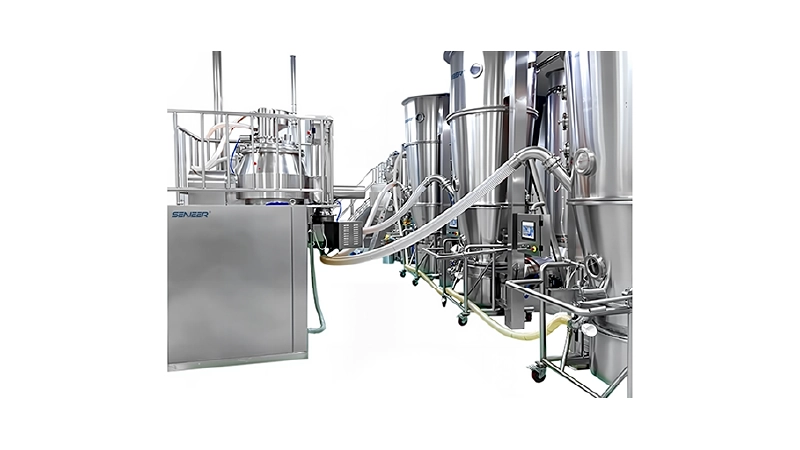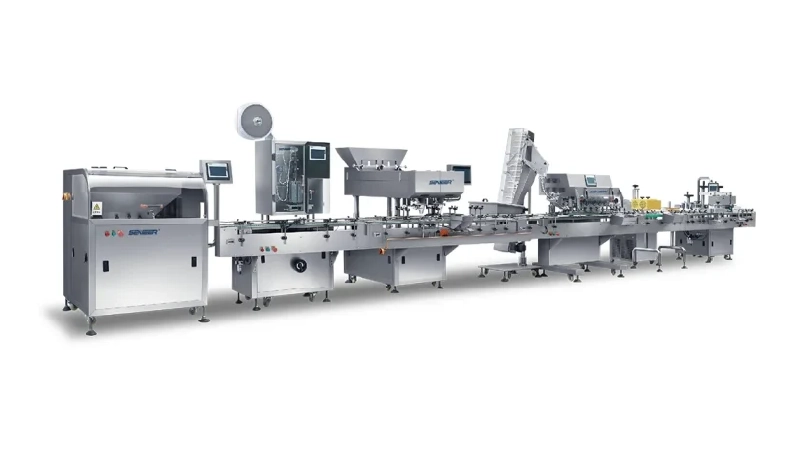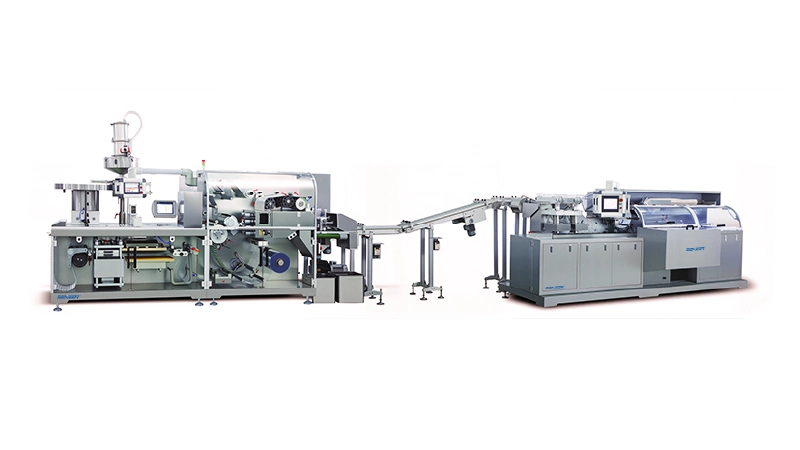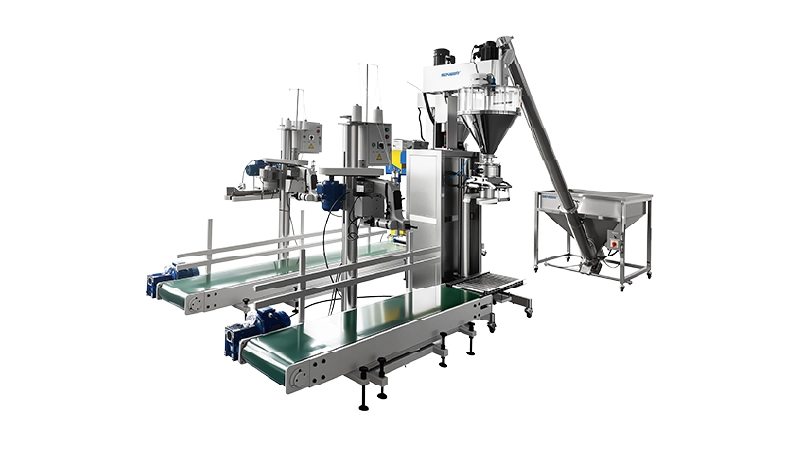Objective: To provide a reference for the detection of seal integrity in injection consistency evaluation.
Methods: Based on literature research and combined with practical work experience, the relevant research on the existing injection packaging seal integrity detection technology was systematically summarized.
RESULTS AND CONCLUSION: At present, our country is still in the initial stage of the research on the seal integrity of pharmaceutical packaging. In order to comply with the trend of consistency evaluation of generic injections in my country, the research on seal integrity testing should be further strengthened, and appropriate seal integrity testing methods should be selected according to injections and packaging. It is found that the mass extraction method has strong comprehensive performance, and it is one of the ideal methods for seal integrity detection in the consistency evaluation of injections.
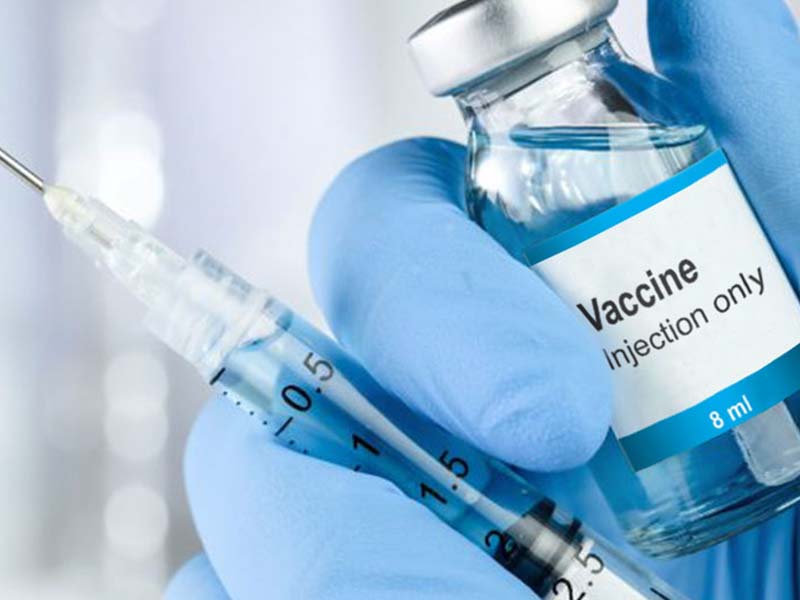
Part 1 Classification Of Seal Integrity Testing Methods
1.1 Deterministic Detection Method And Probabilistic Detection Method
According to whether the leakage phenomenon is predictable and controllable during detection, seal integrity detection can be divided into deterministic detection and probabilistic detection. The deterministic detection method is based on a series of predictable leakage phenomena, using controllable and monitorable physical and chemical testing techniques to detect leakage, and can obtain objective quantitative detection results. Commonly used methods include mass extraction method and vacuum decay method. , laser headspace gas analysis method, high voltage discharge method, helium mass spectrometry (vacuum mode), etc. The probabilistic detection method is a detection method based on a series of testing links with uncertainty and random results. The test results are random, and often require a large sample size and strict test conditions to reduce the randomness of the results and ensure The validity of the results, commonly used methods are helium mass spectrometry (sniffing mode), microbial challenge method and liquid tracer method. The two methods have their own advantages and disadvantages, and the appropriate detection method should be selected according to the characteristics of the injection and the packaging. Deterministic detection methods have the advantages of sensitivity, accuracy, stability, and low cost, and should be given priority.
1.2 Non-Destructive Testing Methods And Destructive Testing Methods
Seal integrity testing can be divided into non-destructive testing and destructive testing according to whether the testing method has an impact on the injection and packaging. Nondestructive testing methods include mass extraction, vacuum decay, and laser headspace gas methods. The high-voltage discharge method is generally regarded as a non-destructive testing method because it has no effect on injections and packaging. But the high voltage will convert the oxygen in the package into ozone, which may affect the product quality. Therefore, the United States Pharmacopoeia (USP39-1207) recommends that the high-voltage discharge method for testing seal integrity need to evaluate its impact on the quality of the drug product throughout its life cycle. The gas tracer method may be non-destructive or destructive. When the wall of the package needs to be damaged and the tracer gas is introduced or the tracer gas has an impact on the injection or the package, it is a destructive detection method. The microbial challenge method and the liquid tracer method have an impact on the drug or packaging, and are destructive detection methods.
Non-destructive testing methods have advantages over destructive testing methods. For non-destructive testing, samples can be reused during method development and validation. At the same time, the “United States Pharmacopoeia” (USP39-1207) pointed out that when the non-destructive testing method is used to test the stability samples at a certain time point through the seal integrity, it can also be used for the detection of other stability items at this time point, such as packaging Material compatibility testing. Therefore, the use of non-destructive testing methods can save samples and reduce testing costs, which is especially important for drugs with a small sample size or expensive prices.
1.3 Fluid Flow Type Detection Method And Non-Fluid Flow Type Detection Method
According to whether the leakage in the detection process is caused by fluid flow, the seal integrity detection can be divided into fluid flow type detection and non-fluid flow type detection. Mass extraction method, vacuum decay method, laser headspace gas analysis method, gas tracer method, microbial challenge method and liquid tracer method are all fluid flow detection methods, the first four are based on gas flow, and the latter two are based on flow of liquid. Based on the detection method of fluid flow, after the leak hole is blocked, the fluid cannot flow through the leak hole smoothly, which may cause false negative results. When using the detection method based on fluid flow, solid substances will block the leak hole and affect the detection results. When the detection method based on gas flow is used, the liquid protein drugs tend to accumulate near the leak hole due to the volatilization of the solvent and block the leak hole. Therefore, the first four are not suitable for the detection of liquid protein drug packaging. Liquids can also plug leaks when gas tracers are used. With methods based on liquid circulation, air bubbles in the leak may “plug” the leak. The high-voltage discharge method is a non-fluid flow detection method. When the leak hole is blocked by protein drug aggregates, the blockage of the leak hole will not affect the leakage detection because the protein aggregates conduct electricity. Therefore, the high-voltage discharge method can be used for the detection of liquid protein drug packaging, and can complement other detection methods to improve the solution to the sealing integrity of liquid protein macromolecular drug packaging.
1.4 Driven Detection Method And Non-Driven Detection Method
According to whether external force is applied to drive and form leakage during detection, it can be divided into driving type detection and non-driven type detection. Driven detection methods include mass extraction method, vacuum decay method, helium mass spectrometry (vacuum mode), microbial challenge method (immersion mode), liquid tracer method, etc., all of which need to be pressurized or vacuumed to make the inside and outside of the package form The pressure difference is used to drive the leak so that it can be detected. At the same time, for some packages with moving parts (such as syringes) and flexible packages that are prone to deformation, special tools are required during testing to limit the displacement of moving parts and the deformation of flexible packages, thereby reducing background noise during testing and improving Detection sensitivity to avoid errors in detection results. The laser headspace gas method and the high-voltage discharge method do not need to rely on external force to drive the leakage during the test. They are non-driven detection methods and do not require special tools to limit the movement of parts and the deformation of packaging.
Part 2 Injection Seal Integrity Test Method
2.1 Mass Extraction Method
The mass extraction method is a method of detecting the gas mass flow rate leaked from the package in a vacuum environment by using an intelligent molecular flow mass sensor. Put the package into the test chamber, vacuumize the test chamber, the gas in the package or the gas formed by volatilization of the liquid will leak out of the package through the leak hole, and will be detected by the intelligent molecular flow mass sensor that can work in the molecular flow state. Finally, the detected mass flow rate is used to determine whether the package is leaking.
The method has strong comprehensive performance and great competitive advantage. The detection limit can reach the nominal aperture of the glass microburette 1 μm and the diameter of the tungsten wire is 15 μm, with high detection sensitivity; it has the detection mechanism of total leakage, large leakage and small leakage, and the detection range is wide; based on the detection mechanism of mass flow rate, the detection results are subject to The external environment such as temperature and humidity have less influence and good stability; the types of packages tested include glass and plastic bottles sealed with elastomeric seals or screw caps, glass or plastic ampoules, syringes, flexible packaging bags, etc. The volume covers a few milliliters to several liters, the state of the drug includes solid and liquid, covering almost all packaging types and dosage forms of injections, and the method is applicable to a wide range. In view of its many advantages and wide recognition in the industry, the mass extraction method has become one of the ideal methods for seal integrity testing in the consistency evaluation of injections.
The American Society for Testing and Materials (ASTM) has also established an international standard for this method (ASTM F3287). This standard establishes and verifies the sealing integrity detection methods of glass bottles, low-density polyethylene bottles, and glass syringes in two modes of gas leakage and liquid leakage. The indicators of method verification include detection limit, accuracy and precision. In the headspace gas leak mode, the detection limit at a 95% confidence probability is a glass microburette with a nominal pore size of 1 μm; The output limit is 1 μm nominal pore size for glass micropipettes and 2 μm for glass syringes. In the detection of leaks with the detection limit and above, the accuracy of the method is 100%, and the precision test results meet the requirements of repeatability limit and reproducibility limit.
Different forms and compositions of injections have different effects on the detection results of mass extraction method. YOON et al. found that when the injection is a solid powder (mannitol powder), the leak will not be blocked; when the injection is in a liquid state, the viscosity has little effect on the test results. When the injection is a liquid protein drug with a low concentration, the leak will not be blocked; when the drug concentration increases, the leak will be blocked, because the macromolecular protein drug gathers near the leak to block the leak, resulting in False negative results.
2.2 Vacuum Decay Method
The vacuum decay method uses a pressure sensor to detect the attenuation value of the vacuum degree of the test chamber caused by the leakage of the package. The working principle is similar to the mass extraction method. The details are as follows. The test package is installed in the test chamber and vacuumized, and the gas or liquid in the package is volatilized to produce gas Enter the test chamber through the leakage hole, causing the vacuum degree in the chamber to become smaller. The pressure sensor can be used to detect the attenuation value of the vacuum degree, and finally use the attenuation value to determine whether the package is leaking. Generally, absolute pressure sensors and differential pressure sensors are used together. The absolute pressure sensor is used to monitor the absolute pressure of the test chamber in order to control the vacuum in the chamber so that the gas in the package can flow smoothly to the test chamber through the leakage hole. It is more important for the detection of liquid leakage, because the test chamber must be Only when the vacuum is increased to a certain degree can the liquid vaporize and overflow the packaging. Within the predetermined time, if the vacuum degree in the test chamber cannot be increased to a certain level, it indicates that there is a large leak in the packaging. The differential pressure sensor has higher sensitivity and is used to detect the change in vacuum caused by the gas flowing out of the package, so it is used to detect small leaks.
The vacuum decay method is widely used in the leak detection industry for which an international standard (ASTM F2338) has been established for packaging such as trays and cups and saucers without lids, trays sealed with porous barrier materials, non-porous rigid packaging, non-porous For flexible packaging, the detection limit of air leakage for trays and cups and saucers without lids is 50 μm, the detection limit for air leakage of trays sealed with porous barrier materials is 100 μm, and the detection limit for gas and liquid leakage in non-porous rigid packaging Both are 5 μm. This method is suitable for detecting gas leaks and liquid leaks. WOLF et al. found that the liquid leakage detection method was used to compare the air-filled and water-filled packages, and found that the water-filled package had a higher leakage rate under the same size leak hole, because the water was under a higher vacuum. Will volatilize and produce a lot of water vapor.
The vacuum decay method is not suitable for the detection of packages with little headspace gas or liquid and excessive leakage. When there is less headspace gas or liquid in the package, when the vacuum test chamber is evacuated, the limited gas in the package will quickly overflow through the large leak hole, and the gas in the test chamber will be pumped away. The flow of gas to the test chamber causes a change in vacuum, which can produce false negative results. In addition, its stability is not as good as the mass extraction method. The reason is that the former is based on pressure changes while the latter is based on mass changes, pressure changes with fluctuations in ambient temperature, while mass does not.
2.3 Laser Headspace Gas Analysis
Laser headspace gas analysis detects the gas content by detecting the absorbance of the headspace gas in the package to a low-energy laser. According to the type of gas to be detected, the frequency of the laser can be adjusted to match the wavelength of the laser with the absorption spectrum characteristics of the target gas to be analyzed. When the laser passes through the headspace gas in the package, the headspace gas absorbs the laser light. According to the absorbance, the calibration curve is used to deduce the content of the target detection gas, so as to determine whether the package is leaking. At present, the gas types that can be detected mainly include oxygen, water vapor and carbon dioxide, and it can also be used to detect the pressure of the headspace in the package. The detection sensitivity of this method is very high, and the detection limit can reach the nominal aperture of the glass microburette 0.2 μm, which can often meet the requirements of the maximum allowable leakage limit of the packaging system. A comparative study of liquid tracer methods.
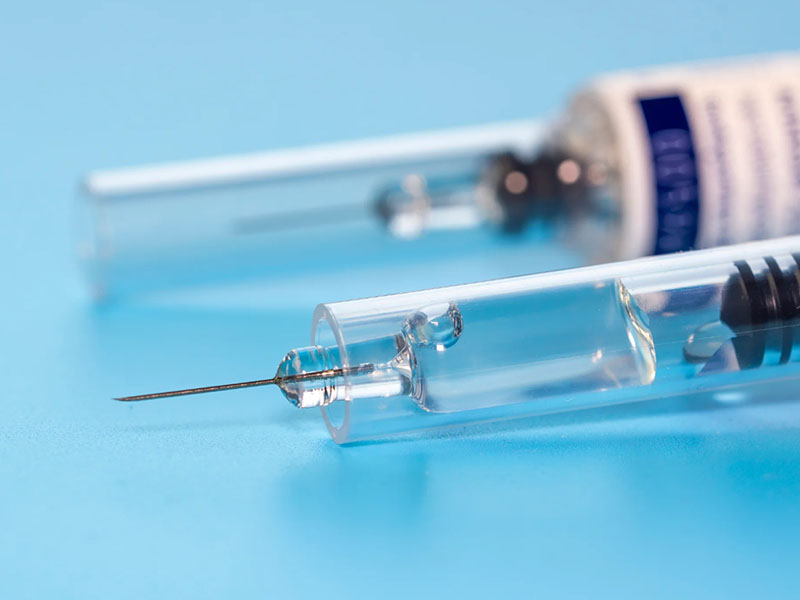
The remarkable feature of this method is that the test results can reflect the leakage of the product through the whole process of production, transportation, storage, etc., while other detection methods can only characterize the sealing state of the package during the test. This property is especially important for evaluating the seal integrity of pharmaceutical products stored under extreme conditions, such as those with special headspace gas compositions or pressures within packages stored at ultra-low temperatures. The rubber stopper will lose its viscoelasticity at -80°C, the sealing ability will be reduced, the packaging will leak, and the composition or pressure of the headspace gas will change. When the product is taken out and placed at room temperature, the rubber plug will recover its sealing performance. At this time, other methods cannot be used to detect leaks, but laser headspace gas analysis can effectively detect leaks at low temperatures.
The gas exchange between the headspace gas in the package and the environment through leaks, especially small leaks, is very slow, and it takes a long time for the gas exchange amount to reach the detection limit of the method. To expedite method development and validation, a “Bombing” procedure can be used to accelerate gas exchange. The procedure is to place the sample in an environment with a certain degree of vacuum for a certain period of time, then take it out and equilibrate it in the atmospheric environment for a certain period of time, and increase the pressure difference between the inside and outside of the package to speed up the exchange of gas inside and outside the package. However, parameters such as pressure and time of product handling in this procedure have a great influence on the test results.
The scope of application of the laser headspace gas analysis method has certain requirements. First of all, there is a requirement for the transparency of the packaging. Only transparent or translucent packaging that can pass through low-energy lasers can be detected. This method has been used for the detection of transparent packaging such as vials and ampoules, and can also be used for flexible packaging bags. detection. Secondly, there are requirements for the headspace gas in the package. Only the drug packaging with a headspace gas composition or pressure different from the environment and with a sufficiently large headspace gas volume can be tested. For drugs and freeze-dried products filled with nitrogen in the package, it can detect the oxygen content in the headspace gas in the package; the detection of water vapor is mainly used in the detection of drugs and freeze-dried preparations under negative pressure in the package; for storage in dry ice Drugs in the package can detect the carbon dioxide content in the packaging headspace gas. For prefilled syringes, the volume of headspace gas is small, generally only a few milliliters. During the test, the laser may pass through the liquid part and be absorbed by water, resulting in errors in the test results. Therefore, this method is not suitable for testing the integrity of the seal of prefilled syringes.
2.4 High Voltage Discharge Method
The high-voltage discharge method detects the leakage through the current of the drug and the package, and is suitable for liquid or semi-liquid drugs, and the conductivity of the drug is better than that of the package. The complete package has poor electrical conductivity, and the current passing through the package is low; when there is a leak in the package, and the drug is near the leak or filled in the leak, the resistance of the package will become smaller, and the current passing through it will increase significantly. When the current increases to a certain level, exceeding the leakage threshold, it indicates that the package is leaking. The greater the difference in conductivity between the drug and the package, the greater the applied voltage, and the closer the drug to the leak, the greater the sensitivity of the method. The detection limit of the high-voltage discharge method for flexible packaging bags is laser-drilled with a nominal aperture of 2.5 μm, and the detection range is 2.5-11.2 μm. At the same time, it can also detect type defects generated during heat sealing; for prefilled syringes, the detection limit can be Achieve laser drilling 5 μm. The detection speed of the high-voltage discharge method is very fast, often only takes a few seconds, so it is widely used in the online detection of the production line.
Among the deterministic detection methods, the high-voltage discharge method can only detect the position of the leak. It uses various mechanisms to ensure that the electrode probe can detect every part of the packaging surface, and detect the part with the strongest current to determine the position of the leak. When testing flexible packaging, electrode probes made of carbon brush bristles are used to scan the surface of the sample in different directions to find the specific location of the leak. When testing the syringe, the syringe is continuously rotated around its central axis, while the electrode probe is constantly moving on the surface of the syringe perpendicular to the direction of rotation, or the multi-channel electrode is used to cover the entire sample [3] to determine the specific location of the leak. Location.
The application of this method has certain limitations. The first is to be selective about the injection state and packaging. The injection must be in a liquid or semi-liquid state and not easy to burn. The packaging should be made of materials with better insulation properties, such as glass, elastomer and plastic; secondly, the test results are affected by the surface of the packaging. Moisture has a great influence. If there is moisture on the surface of the package, the resistance of the package will be reduced, resulting in an increase in the current value passing through the package, resulting in false positive results. Therefore, when using this method to detect, it is necessary to avoid moisture on the surface of the package, especially for stable samples placed at a low temperature. After taking it out, it should be fully balanced at room temperature to avoid condensation on the surface of the package during the test, which will affect the test results.
2.5 Gas Tracer Method
The detection object of the gas tracer method is the tracer gas leaked through the leaking hole of the packaging. It has a wide range of applications and can be used for the detection of non-porous rigid packaging and flexible packaging. The volume of the packaging covers small packages to large packages of several liters . The tracer gases are helium and hydrogen. Helium has the advantages of non-toxicity, inertness, cheap price, small content in the atmosphere, and low background value during detection, and is used more in actual detection. Helium tracer method, also known as helium mass spectrometry, has two modes: vacuum detection and sniffing detection.
The vacuum detection mode of helium mass spectrometry is to put the test package filled with helium into the vacuum test chamber, and then vacuumize the test chamber. rate to determine whether the package is leaking (see standard ASTM F2391). The sensitivity of the helium mass spectrometer detector is high and the background content of helium in the atmosphere is very low, so the sensitivity of the vacuum detection mode of helium mass spectrometry is very high, and it is currently the method with the highest detection sensitivity. For rigid packaging, the detection limit can reach 10-7~10-5 scc/s, which is equivalent to the nominal aperture of glass microburette 0.1~0.3 μm, and the detection limit in flexible packaging bags can reach pinhole-type leaks of 10 μm. The sensitivity of the vacuum detection mode of helium mass spectrometry can meet the requirements of the maximum allowable leakage limit value of rigid packaging, and the comparison research with the microbial challenge method or the tracer liquid method can be avoided by using this method. In view of the high sensitivity of the vacuum mode, this method is often used to study the relationship between the leakage rate or the size of the leak hole and the probability of microbial invasion, and is also used to study the relationship between the leak rate and the size of the leak hole. The square of the nominal pore diameter of the hole is proportional to both. The vacuum detection mode can detect the whole package, and also can detect a certain part of the package, such as the surface of the package and the seal.
The helium mass spectrometer sniffer detection mode is a detection method that uses a sniffer probe connected to a helium mass spectrometer detector to scan the packaging surface to capture and detect leaked tracer helium, and can detect the location of packaging leaks. In practical applications, this method is only used when the specific location of the leak hole needs to be determined. The accumulation of tracer helium leaked from the package on the surface of the package is unpredictable, and the sniffing and scanning procedures have a great influence on the detection results due to the difference in operator skills, so this method is a probabilistic detection method.
The gas tracer method also has some drawbacks. The first is that the test results are easily affected by the penetration of tracer gas. The tracer gas may permeate through the packaging walls (especially plastic and rubber type packaging walls), thereby masking the leaking tracer gas and causing false positive results. When the vacuum detection mode of helium mass spectrometry is used, the leakage threshold should be determined according to the detected temperature, because the permeability of helium is different at different temperatures, and the higher the temperature, the stronger the permeability of helium. If the leakage rate at a higher temperature is judged by the leakage threshold at a low temperature, the permeation amount of helium at a higher temperature may exceed the leakage threshold at a low temperature, resulting in a false positive result. Therefore, it is necessary to fully evaluate the influence of tracer gas penetration on leak detection results. Secondly, it is not suitable to detect large leaks in small packages. There is a certain time interval between filling the tracer gas and leak detection. During this period, for some small packages with large leaks, the tracer gas filled in the package may escape through the large leaks. There is no leakage during detection. Tracer gas escapes the packaging, giving a false negative result. In addition, when testing the packaging of injection solutions, especially in vacuum mode, it should be avoided that the injection solution or its volatilized water vapor enters the testing system and damages the testing equipment.
2.6 Microbial Challenge Method
The microbial challenge method detects whether there are microorganisms intruding into the package in a high-concentration microbial environment. By injecting sterile medium into the empty package, sealing, sterilizing, and culturing, it is checked whether there is colony growth in the package. If there is no colony growth in the package, put the package into a medium with a high concentration of microorganisms, apply a certain driving force and keep it for a certain period of time to promote the transfer of microorganisms in the medium to the package through the leak hole; Equilibrate in the environment for a certain period of time; then take the sample out of the medium and carry out microbial culture, and use visual observation to check whether there is colony growth in the package. The detection limit of the microbial challenge method is generally 5 μm nominal pore size of the glass microburette.
According to different media containing high concentrations of microorganisms, the microbial challenge method is divided into immersion mode and aerosol mode. The immersion mode is based on a culture medium containing a high concentration of microorganisms. The microbial challenge method needs to select microorganisms with small size and strong motility.
Microorganisms commonly used in immersion mode are Brevundimonas diminuta, Serratia marcescens, Escherichia coli, and a mixture of Brevundimonas diminuta and Escherichia coli. The concentration of microorganisms in the culture medium is generally not lower than 105 cfu/mL. Commonly used media are lactose saline and soybean casein digestion medium. Lactose saline is a non-protein medium, which will not produce cell aggregation and can avoid clogging of leak holes. Immersion mode is mainly used for inspection of rigid packaging. The aerosol mode uses aerosols containing high concentrations of microorganisms as the medium. The microorganisms used in the aerosol are mainly Staphylococcus aureus and Escherichia coli. Staphylococcus aureus is a Gram-positive bacterium, easy to obtain, easy to identify the colony shape, and more importantly, it can survive intact during the nebulization process. Escherichia coli is a gram-negative bacterium, which is often used in the test of bioaerosol samples, so it is also an ideal strain in the aerosol detection mode. A special sprayer is used to atomize the bacterial solution to form an aerosol with a particle size of 1-5 μm, which is conducive to the generation of sollized bacteria. The concentration of microorganisms in the aerosol is generally not lower than 2.0 × 107 cfu/m3. The aerosol mode exerts less external force on the package, and is mainly suitable for the detection of flexible packaging bags that are prone to deformation.
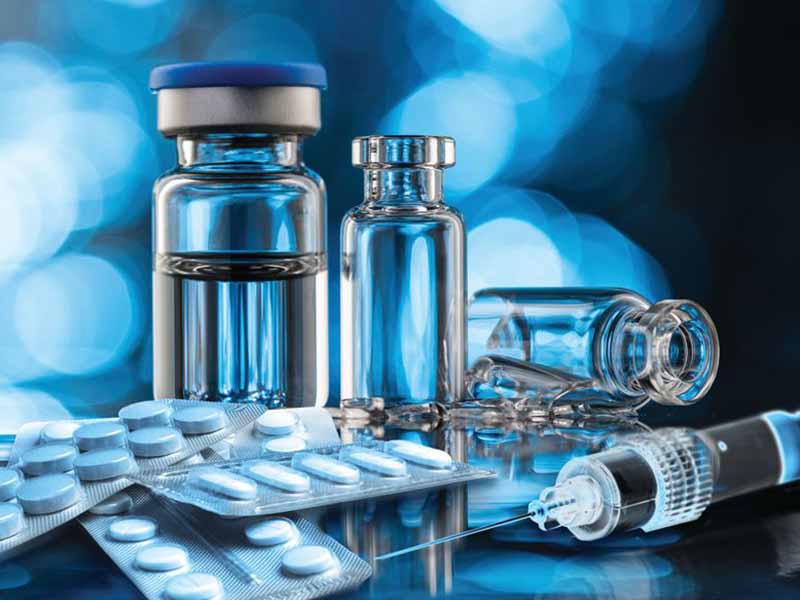
The detection results of the microbial challenge method are affected by many uncertain factors. First of all, it is unpredictable and controllable whether microorganisms can find the leak; secondly, even if the microorganisms can find the leak, whether the microorganism can enter the package through the leak is also affected by many factors, such as the geometric size and shape of the leak, the material and structure of the package , Whether there is liquid in the leak hole, the surface strength of the bacterial liquid, whether the leak hole is blocked, etc. The detection results of microbial intrusion are unpredictable and uncontrollable, especially when the leak hole is small, the detection results vary greatly. It is a probabilistic detection method. In addition, the microbial challenge method is only suitable for the detection of empty packaging, not for the detection of pharmaceutical packaging, and the detection cycle is relatively long (several weeks each time). It is generally used when there is no suitable method, or when the results of other detection methods require direct evidence of microbial invasion.
2.7 Liquid Tracer Method
Liquid tracer method is the method of detection of tracer in tracer liquid through packaging leakage. Place the test package in a container containing a tracer liquid, put the container into a vacuum chamber, evacuate or pressurize the vacuum chamber, and keep it under the corresponding vacuum degree or pressure for a certain period of time, release the vacuum or Pressure, equilibrate at atmospheric pressure for a certain period of time, and then detect whether the package contains tracers. Tracer liquids mainly include dye solutions, metal ion solutions and radionuclide solutions. When a dye solution is used as the tracer liquid, it is also called the color water intrusion method. Commonly used dyes include methylene blue, erythrosine, and rhodamine B. Before the test, the prepared dye solution should be filtered with a 0.2 μm membrane to prevent the insoluble substances in the dye solution from clogging the leak hole. The metal ion solution is commonly used to contain Mg2+ solution. For the detection of tracers, there are mainly chemical analysis methods and visual inspection methods. The chemical analysis method is to use chemical analysis means to detect the concentration of the tracer in the package, such as the use of ultraviolet-visible spectrophotometry to detect the concentration of dyes, and the use of atomic absorption spectrometry to analyze the concentration of Mg2+, but the method needs to be verified by methodology. The visual inspection method is mainly used in the color water intrusion method, which is to visually judge whether there is dye solution intrusion in the package. It is not only related to the skill and experience of the inspector, but also affected by the inspection environment such as illuminance, light source type, and observation background.
The liquid tracer method is a detection method based on the contact between the tracer liquid and the leak, the intrusion of the tracer liquid, the diffusion of the tracer, etc., all of which are unpredictable and uncontrollable, especially when the leak is relatively small. In the case of a small leak, even if the hole diameter is the same, the difference in the test results is large [3]. Therefore, the liquid tracer method is also a typical probabilistic detection method.
The color water intrusion method is most widely used in the liquid tracer method. The principle of the color water intrusion method is similar to the microbial challenge method, but it does not require microbial cultivation, and the detection cycle is shorter than the microbial method, and it can be used for the detection of packaging containing drugs . Due to the advantages of simplicity, low cost, and short detection cycle, the colored water intrusion method has been used in the pharmaceutical industry for a long time and in a wide range, and many detection method standards have been formed. However, studies by WOLF et al. have shown that none of these standard methods can reliably detect positive samples with a laser-drilled hole of 5-15 μm. The sensitivity and accuracy of the method are not good, and they are only suitable for detecting large leaks. By optimizing these standard methods, such as increasing the pressure difference inside and outside the package, using a combination of positive and negative pressure, prolonging the action time, increasing the sample size of the test, and increasing the concentration of dye and surfactant in the dye solution, the method can be improved. Sensitivity, the detection limit can reach 5 μm. However, the optimized conditions are relatively harsh, which will lead to the intrusion of colored water in negative samples, resulting in false positive results. Therefore, the development and verification of the color water intrusion method is relatively difficult, and it is not suitable for the detection of vial packaging, because it is difficult to remove the dye between the rubber stopper and the glass bottle.
Part 3 Outlook
It is worth noting that the development and verification of all the above-mentioned detection methods requires customizing relevant samples or devices for the drug and packaging to be tested. All detection methods require custom positive samples that are identical to the drug product and packaging to be tested, including multiple levels of leakage. The mass extraction method needs to customize the solid body, test cavity or filling block for the sample to be tested, the vacuum decay method needs to customize the solid body and cavity, the laser headspace gas analysis method needs to customize the standard sample for calibration, and the high-voltage discharge method needs to customize the electrode .
At present, the research on the sealing integrity of pharmaceutical packaging in my country is still in its infancy. In order to adapt to the trend of consistency evaluation of injection generic drugs in my country, the research work on seal integrity testing should be further strengthened. Seal integrity detection methods have their own advantages and disadvantages. In the consistency evaluation of injections, appropriate detection methods should be selected according to the conditions of injections and packaging. In fact, when the diameter of the leak hole reaches 1 μm, microorganisms start to invade. Currently, only mass extraction, laser headspace gas analysis, and helium mass spectrometry (in vacuum mode) meet the detection limit requirement of 1 μm. At the same time, the mass extraction method can detect not only small leaks, but also large leaks, with a wide detection range; based on the mass flow rate detection mechanism, the detection results of the mass extraction method are less affected by the environment and have good stability; the detection objects cover all parts of the injection Packaging type and dosage form, with a wide range of applications; it is a non-destructive testing method, in the process of method development and verification, positive samples can be reused, the number of positive samples required is small, and the testing cost is low; in the testing of stability samples, the mass extraction method is used The tested samples can continue to be used for compatibility testing, and the required sample size is small; the audit trail function is realized to ensure the integrity of the testing data. It can be seen that the mass extraction method has strong comprehensive performance and is one of the ideal methods for seal integrity detection in injection consistency evaluation.






